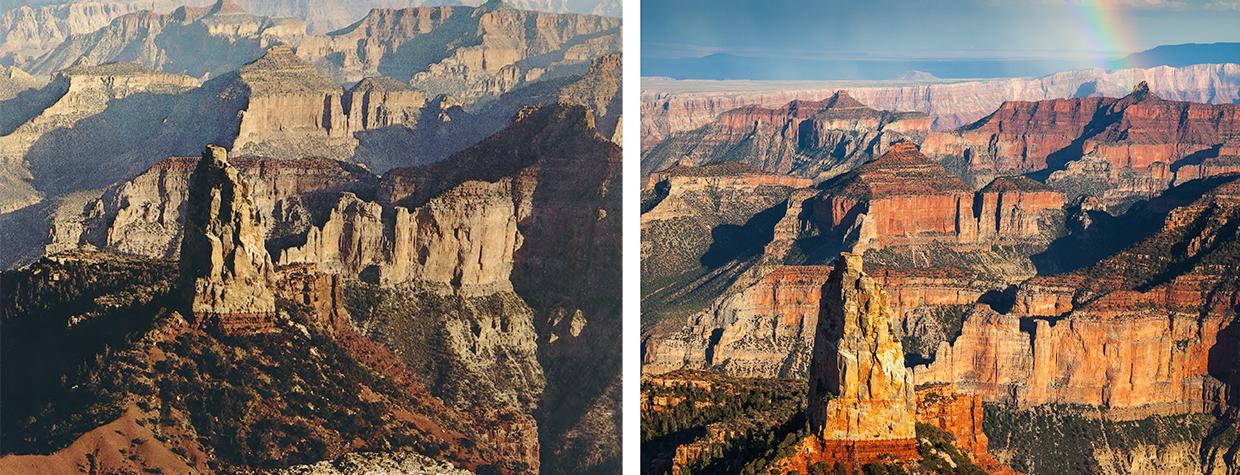Above: Darwin Van Campen’s photograph from Point Imperial on the Grand Canyon’s North Rim was made with a 4x5 camera and published in the May 1972 issue of Arizona Highways. Above, right: By contrast, Adam Schallau’s 2011 photograph from the same vantage point was made with a full-frame digital camera.
A longtime reader asked about the evolution of our photography: “Photos that wereacceptable for publication 50 years ago now often look dull. Part of the change can be attributed to camera and printing technology. Do you think that today’s published photographers are more skilled, or do tastes change?”
It sounds like a simple question, but it’s not. Technology certainly has a lot to do with the differences, but the four-color printing process has changed, too. The result of these advances is the ability to create a product that’s much more nuanced than what we could make 50 years ago.
Because this is a photo column, I’ll focus on the second half of the question. Are today’s photographers more skilled? In my opinion, no. Old-school shooters had a steep hill to climb in terms of mastering their equipment — especially 4x5 view cameras, which were used to make most of the photos that Arizona Highways published 50 years ago. Those cameras have no automatic settings, which meant everything had to be done manually. Making a proper exposure using transparency film was no easy task: If your settings were off by much more than half an f-stop, the film often was unusable. And because film was the end product, there was no way to recover data or fix a botched exposure in postproduction.
By contrast, today’s photographers have to be skilled both in the field and at the computer. We have more tools today, and, like mastering view cameras, keeping up with the technology and the software is critical to making photos that are worthy of publication.
Despite the differences, some things haven’t changed. Most importantly, vision. The ability to pull together elements from a three-dimensional world, put them in a two-dimensional rectangle and make the scene compelling is both an art and a craft. A person can master every camera and Adobe program available, but if they don’t understand light and can’t make an interesting composition, none of that matters.
Take a look at these two photos. Both were made at Point Imperial on the North Rim of the Grand Canyon. The photo on the left, by Darwin Van Campen, was published in our May 1972 issue. Darwin shot this on 4x5 transparency film, most likely Ektachrome. It’s a well-executed photo, made at a spectacular vantage point in good light.
The photo on the right was made in 2011 by Adam Schallau, who used a full-frame digital camera. According to the metadata, Adam used the camera’s built-in light meter, and set his exposure using the aperture priority setting. I don’t know if he used auto-focus, but that’s an accurate option that’s built into the system. Much like Darwin’s image, Adam’s is a keeper.
The passage of time and the advancement of technology account for the differences we see in these photos. But rather than differences, I’d like to emphasize the positive aspects of the original question. Both Darwin and Adam went into the field with a mental concept for a photograph, and each came away with a winner. Given the tools and technology of the times, both printing companies gave us spectacular results. For those of us who are visually inclined, let’s learn from those who came before and add those takeaways to our own repertoire.
Do you have a question about photography? Email it to [email protected], and our photo editor, Jeff Kida, will try to answer it in a future issue.

